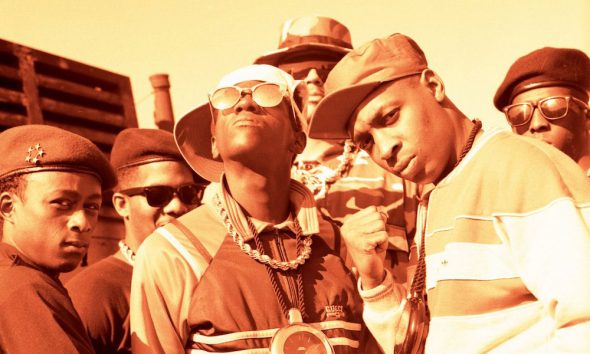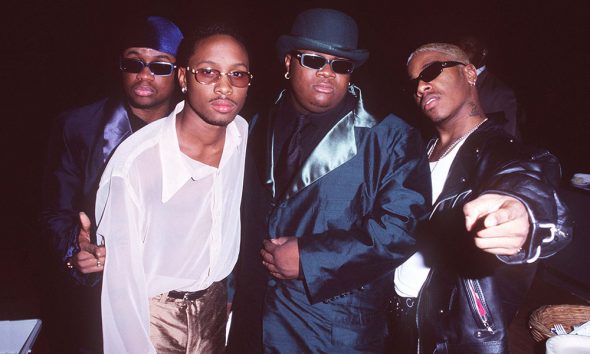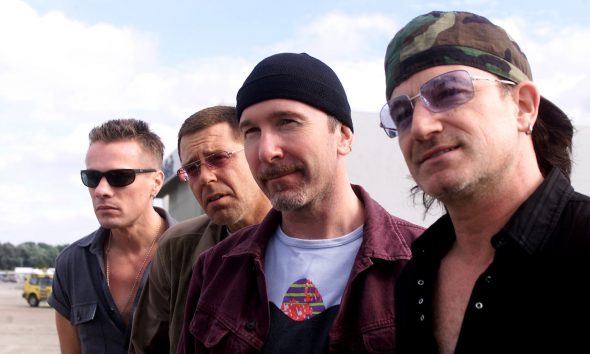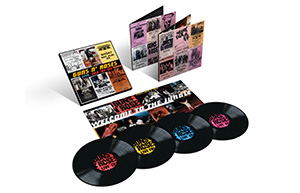Glen Campbell’s Session Work: The Star Behind The Scenes
Long before he sang about ‘The Wichita Lineman,’ he was already building highways between genres.
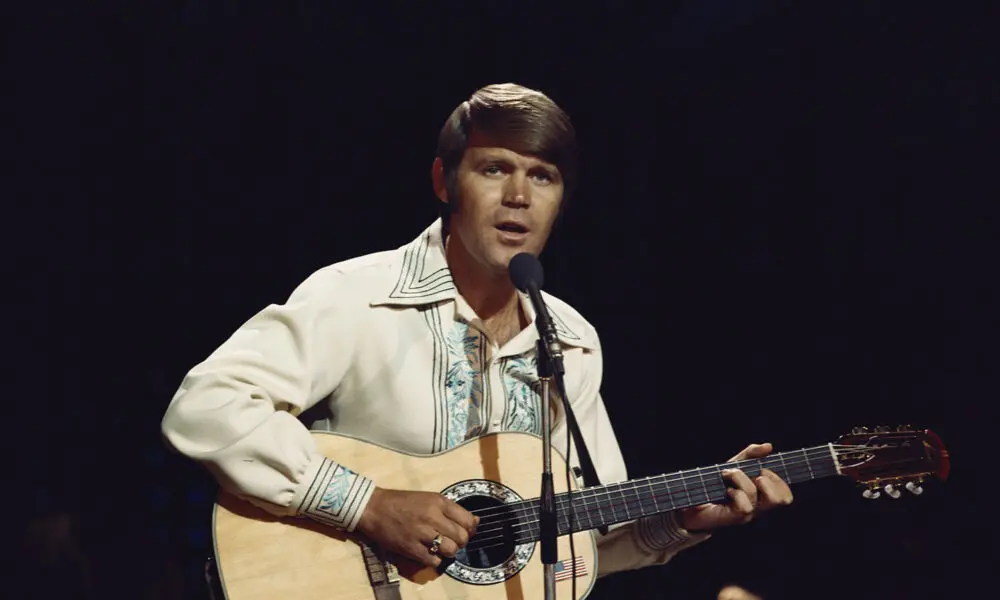
The smooth sounds of Glen Campbell will forever be associated with the major country and pop crossover hits of “The Rhinestone Cowboy” and “Wichita Lineman,” but his work behind the scenes left a major impression on several seminal albums that shaped popular music for generations. Without opening his mouth to sing, Campbell’s work as a session musician would have been enough to make him a legend in the Hollywood recording industry.
From Elvis to The Beach Boys, Campbell became an indispensable sideman in early 1960s recording sessions. As a member of the group of session players known as the Wrecking Crew, Campbell was a first-call musician for producers throughout the decade. Much like the storied players of Nashville’s A-Team, this group was mostly under the radar, except to the readers of album liner notes.
While Campbell became a household name because of his massively popular hits, his work on hundreds of major pop, rock, and country-adjacent songs as a guitar player in one of the best groups of session musicians in popular music history is worth a closer look.
Standards and Pop
Before Campbell ever stepped into the spotlight, his guitar helped define some of the most recognizable pop singles of the 1960s. He contributed to Phil Spector’s Wall of Sound masterpieces like The Ronettes’ “Be My Baby” and Ike & Tina Turner’s “River Deep – Mountain High,” lending rhythmic drive and texture to productions that redefined modern pop. He also played on Jan & Dean’s surf-rock classics “Surf City” and “The Little Old Lady from Pasadena,” both massive hits that captured the spirit of California’s emerging sound. These early sessions proved that Campbell could move effortlessly between lush orchestral pop and youthful rock ’n’ roll energy. It was a versatility that would make him indispensable to producers across genres.
The Righteous Brothers’ “You’ve Lost That Lovin’ Feelin’”
While Top Gun characters Maverick and Goose may have performed the most famous version of this song in pop culture history, the original recording features Campbell on guitar as part of the iconic Wall of Sound that legendary producer Phil Spector developed in this period. Originally recorded in 1964, The Righteous Brothers’ classic hit topped the charts in February 1965 and remains one of the most played songs in history. BMI reported in 1999 that “You’ve Lost That Lovin’ Feelin’” was the most-played song on American radio and television in the 20th century.
Frank Sinatra’s “Strangers in the Night”
Sinatra is synonymous with popular music in the 1960s. Often supported by a big band for live solo shows or with his buddies in the Rat Pack, it made perfect sense for him to seek out the recording stylings of the Wrecking Crew to help him revitalize his career as a more modern pop artist. The resulting album and title track garnered critical and popular acclaim when it hit the charts in 1965. Campbell, who supported the effort on guitar, admitted in a 2008 interview that he was so starstruck during the recording that he was caught staring at Sinatra.
Rock
By the mid-1960s, Campbell was not only shaping the sound of pop but redefining rock. His guitar appeared on The Byrds’ trailblazing “Mr. Tambourine Man,” which introduced folk-rock to mainstream audiences, and on The Beach Boys’ “Good Vibrations,” one of the most innovative singles ever recorded. His close association with Brian Wilson led to his brief tenure as a touring member of The Beach Boys in 1965. Campbell’s fluid touch made him equally adept at driving rock anthems and creating the shimmering textures that defined California’s golden era of studio craftsmanship.
The Beach Boys: “I Get Around,” “Help Me, Rhonda,” and Pet Sounds
Notorious for complex music and groundbreaking sounds, Brian Wilson — producer and member of The Beach Boys — called upon the Wrecking Crew, and Campbell’s guitar playing, for some of the most famous recordings in rock ’n’ roll history. Campbell also toured with The Beach Boys in 1965 before working on the album Pet Sounds.
The Monkees’ “Mary, Mary”
As The Monkees worked to establish themselves as a legitimate rock band, they cut “Mary, Mary” with the support of members of the Wrecking Crew. Interestingly, the TV rock band didn’t release this song traditionally in the United States; rather, it was a cereal-box giveaway in 1969. The Monkees distributed the record to Australian radio ahead of their 1968 tour in the country, with the single reaching No. 4 on the pop charts.
Elvis Presley’s “What’d I Say”
While originally recorded by Ray Charles, Elvis put his mark on the song for his blockbuster movie Viva Las Vegas. His producers pulled in Campbell and the rest of the crew to support the studio rendition of the classic R&B standard. Released as the B-side of the movie’s title track, this version of the song was featured prominently in the film during a major dance scene.
Country
Even as he was shaping pop and rock, Campbell never strayed far from his country roots. Before breaking out as a solo artist, he lent his guitar work to tracks by Bakersfield greats like Buck Owens (“I’ve Got a Tiger by the Tail”) and played on sessions that helped merge country’s twang with pop sophistication. His collaborations with songwriter Jimmy Webb on later solo hits like “By the Time I Get to Phoenix” and “Gentle on My Mind” would extend this cross-genre brilliance, proving that Campbell could bridge Nashville, Hollywood, and the open highways of American sound all at once.
Merle Haggard’s “Mama Tried”
A California boy through and through, Haggard traveled south to Hollywood’s Capitol Records to lay down the tracks for this legendary song. Campbell played acoustic guitar and provided backup vocals for this chart-topping classic. The song won the Grammy Hall of Fame Award in 1999 and was added to the National Recording Registry two weeks before Haggard’s death in 2016.
Roger Miller’s “Dang Me”
Campbell played a very important role in Roger Miller’s life — both professionally and personally. As good friends, they interacted regularly, which may have played a role in Campbell’s contributions to “Dang Me,” which earned Miller a Grammy for Best Country & Western Song.
Legacy
As the 1960s came to a close, Campbell’s years in the studio had prepared him for a remarkable solo career. The discipline, precision, and versatility he developed while playing alongside the Wrecking Crew translated seamlessly into his own recordings. When songs like “Gentle on My Mind,” “By the Time I Get to Phoenix,” and “Wichita Lineman” became massive crossover hits, they reflected not only his voice and charisma but also the depth of experience he had gained as one of the most in-demand guitarists in Los Angeles.
Campbell supported the recordings of many of the top names in American music throughout the 1960s. Other standard and jazz legends like Nat King Cole, Bing Crosby, Dean Martin, Wayne Newton, and Sammy Davis Jr. had Campbell on their records. The Everly Brothers, Bobby Darin, and The Kingston Trio leveraged his expert six-string work for their iconic pop albums.
And the list goes on to include icons like Bobby Darin, Ricky Nelson, Nancy Sinatra, Jan & Dean, Doris Day, Bobby Vee, The Everly Brothers, Shelley Fabares, The Cascades, Paul Revere & the Raiders, The First Edition, Gene Clark, Lou Rawls, Claude King, Lorne Greene, and Ronnie Dove, among others.
Whether playing on “Be My Baby,” “Good Vibrations,” or “Mama Tried,” Glen Campbell’s guitar quietly shaped the sound of American music. Long before he sang about “The Wichita Lineman,” he was already building highways between genres.









